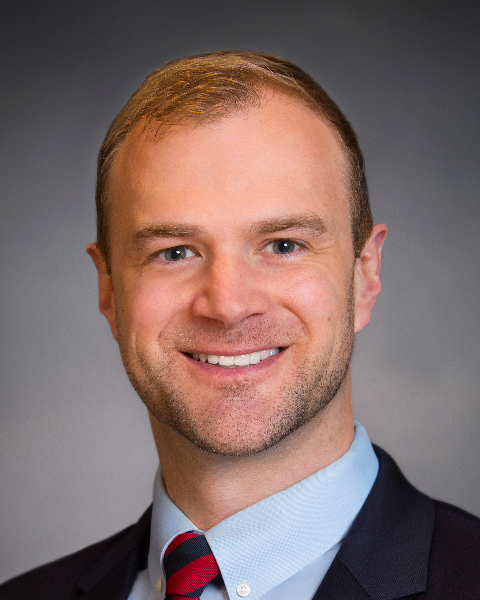PQA 03 - PQA 03 Gynecological Cancer, Pediatric Cancer, and Professional Development Poster Q&A
3587 - Implementing a Flipped Classroom Concept for Radiation Oncology Physics Curriculum
Monday, September 30, 2024
8:00 AM - 9:00 AM ET
Location: Hall C
Screen: 21

Christopher Williamson, MD, MS
Emory University
Atlanta, GA
Presenter(s)
C. Williamson1, E. Elder2, and M. Axente3; 1Department of Radiation Oncology, Winship Cancer Institute of Emory University, Atlanta, GA, 2Department of Radiation Oncology and Winship Cancer Institute, Emory University, Atlanta, GA, 3Emory University, Atlanta, GA
Purpose/Objective(s): Radiation Oncology (RO) residents are required to pass American Board of Radiology (ABR) qualifying exams covering medical physics, radiation and cancer biology, and clinical radiation oncology prior to completion of residency and board certification. Medical physics material is commonly delivered in didactic format covering material based on recommendations from the American Society for Radiation Oncology (ASTRO) and ABR. While multiple studies highlight the benefits of active learning (AL) techniques in a classroom setting (e.g. quizzes, open discussions, and case-based review), AL strategies have not been readily implemented into the RO medical physics curriculum. This project’s scope is to incorporate AL into residents’ medical physics curriculum to help augment resident learning and retention. Materials/
Methods: An AL workgroup comprised of a team of medical physicists and a RO resident was created to transform the current traditional lecture-based medical physics curriculum into a “flipped classroom” model using AL techniques. The flipped classroom model required RO residents to review lecturer curated physics materials as well as self-guided questions pertinent to the covered topic(s) prior to weekly lectures. ABR exam styled multiple choice questions were imbedded into lecture slides with answer choices linked to polling software (polleverywhere.com) used to engage learners. After each question, polled resident responses were assessed, and a content slide was reviewed to explain and discuss the tested concept. After the first block of 6 medical physics lectures (6 out of 32), a 5-point Likert scale and free-form content feedback survey was given to current residents to assess the flipped-classroom format and implementation. Additional survey assessments included the efficient and effective coverage of course content, alignment of out-of-class material with topics covered in class, and resident comprehension.
Results: Based on resident Likert scale responses (n=10 out of 10), after the initial AL lectures, residents felt more confident in the medical physics material (3.9/5). Additionally, by reviewing content prior to lectures, and then actively participating in the AL lectures, residents felt they better understood and retained the lecture material (3.7/5).
Conclusion: Based on the initial survey results, the implementation of an AL learning environment (e.g. flipped classroom with interactive polling) was an overall positive experience. Residents’ perceived comprehension of medical physics lecture material, in-class engagement, and retention was improved. The AL format for teaching high-level curriculum to residents could effectively be expanded to other subjects pertaining to RO resident training. Beyond the use of in-class polling software, other AL methods such as open discussions, workshops, and case-based review could be implemented by educators to expand upon in-class engagement.
Purpose/Objective(s): Radiation Oncology (RO) residents are required to pass American Board of Radiology (ABR) qualifying exams covering medical physics, radiation and cancer biology, and clinical radiation oncology prior to completion of residency and board certification. Medical physics material is commonly delivered in didactic format covering material based on recommendations from the American Society for Radiation Oncology (ASTRO) and ABR. While multiple studies highlight the benefits of active learning (AL) techniques in a classroom setting (e.g. quizzes, open discussions, and case-based review), AL strategies have not been readily implemented into the RO medical physics curriculum. This project’s scope is to incorporate AL into residents’ medical physics curriculum to help augment resident learning and retention. Materials/
Methods: An AL workgroup comprised of a team of medical physicists and a RO resident was created to transform the current traditional lecture-based medical physics curriculum into a “flipped classroom” model using AL techniques. The flipped classroom model required RO residents to review lecturer curated physics materials as well as self-guided questions pertinent to the covered topic(s) prior to weekly lectures. ABR exam styled multiple choice questions were imbedded into lecture slides with answer choices linked to polling software (polleverywhere.com) used to engage learners. After each question, polled resident responses were assessed, and a content slide was reviewed to explain and discuss the tested concept. After the first block of 6 medical physics lectures (6 out of 32), a 5-point Likert scale and free-form content feedback survey was given to current residents to assess the flipped-classroom format and implementation. Additional survey assessments included the efficient and effective coverage of course content, alignment of out-of-class material with topics covered in class, and resident comprehension.
Results: Based on resident Likert scale responses (n=10 out of 10), after the initial AL lectures, residents felt more confident in the medical physics material (3.9/5). Additionally, by reviewing content prior to lectures, and then actively participating in the AL lectures, residents felt they better understood and retained the lecture material (3.7/5).
Conclusion: Based on the initial survey results, the implementation of an AL learning environment (e.g. flipped classroom with interactive polling) was an overall positive experience. Residents’ perceived comprehension of medical physics lecture material, in-class engagement, and retention was improved. The AL format for teaching high-level curriculum to residents could effectively be expanded to other subjects pertaining to RO resident training. Beyond the use of in-class polling software, other AL methods such as open discussions, workshops, and case-based review could be implemented by educators to expand upon in-class engagement.
